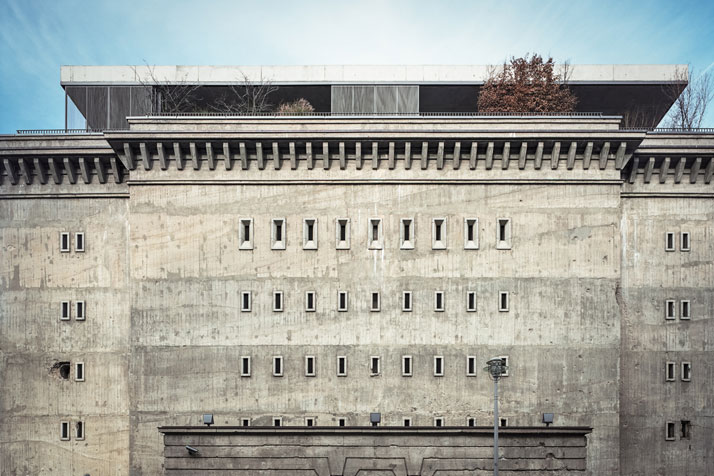
Boros Bunker, Berlin. Photo © Ailine Liefeld / FvF.

Friedrich Kunath, Ohne Titel (2006) | Wax crayon and colored pencil on canvas | 60 × 80 × 2 cm | Boros Collection, Berlin. Photo by NOSHE.
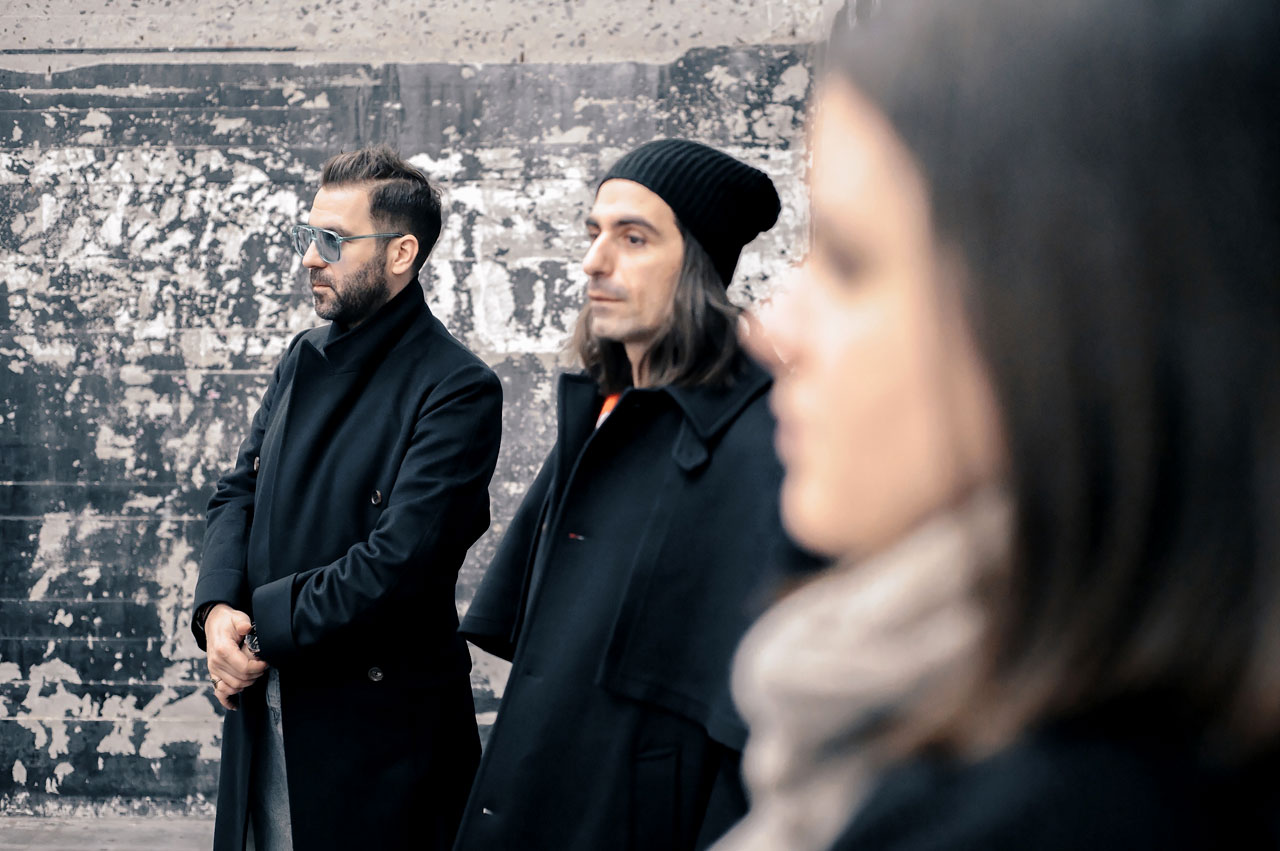
Photo by Elias Joidos.
Known as the Friedrichstrasse Imperial Railway Bunker, the five-storey bunker’s history is as fascinating as that of city whose citizens it was built to protect. Soon after the end of WWII, after a short stint as a prison, the building was turned into a textile warehouse and later used to store tropical fruits from Cuba due to its steady internal temperature, nicknamed at the time Banana Bunker. After Germany’s reunification, it was taken over by performance artist and entrepreneur Werner Vollert and turned into a hardcore techno club, a precursor to the now famous Berghain and KitKat clubs, while also housing theatre productions and an erotic trade fair.
Finally in 2003, it was acquired by the Boros and converted into a 3,000 square-metre exhibition space by German architect Jens Casper, in collaboration with Petra Petersson and Andrew Strickland of Berlin-based practice Realarchitektur, who also designed - on the top of the bunker - a modern penthouse where the couple enjoy panoramic views of the city, checking one more box in the building’s kaleidoscopic history of incarnations. Although the original 120 small rooms of the bunker were turned into eighty larger gallery spaces, the venue’s low ceilings and two-meter thick walls, impenetrable to both phone signals and external sounds, evince a sense of isolation that soon turns into bafflement and then bewilderment as one progresses deeper inside and the art becomes the sole reference point.
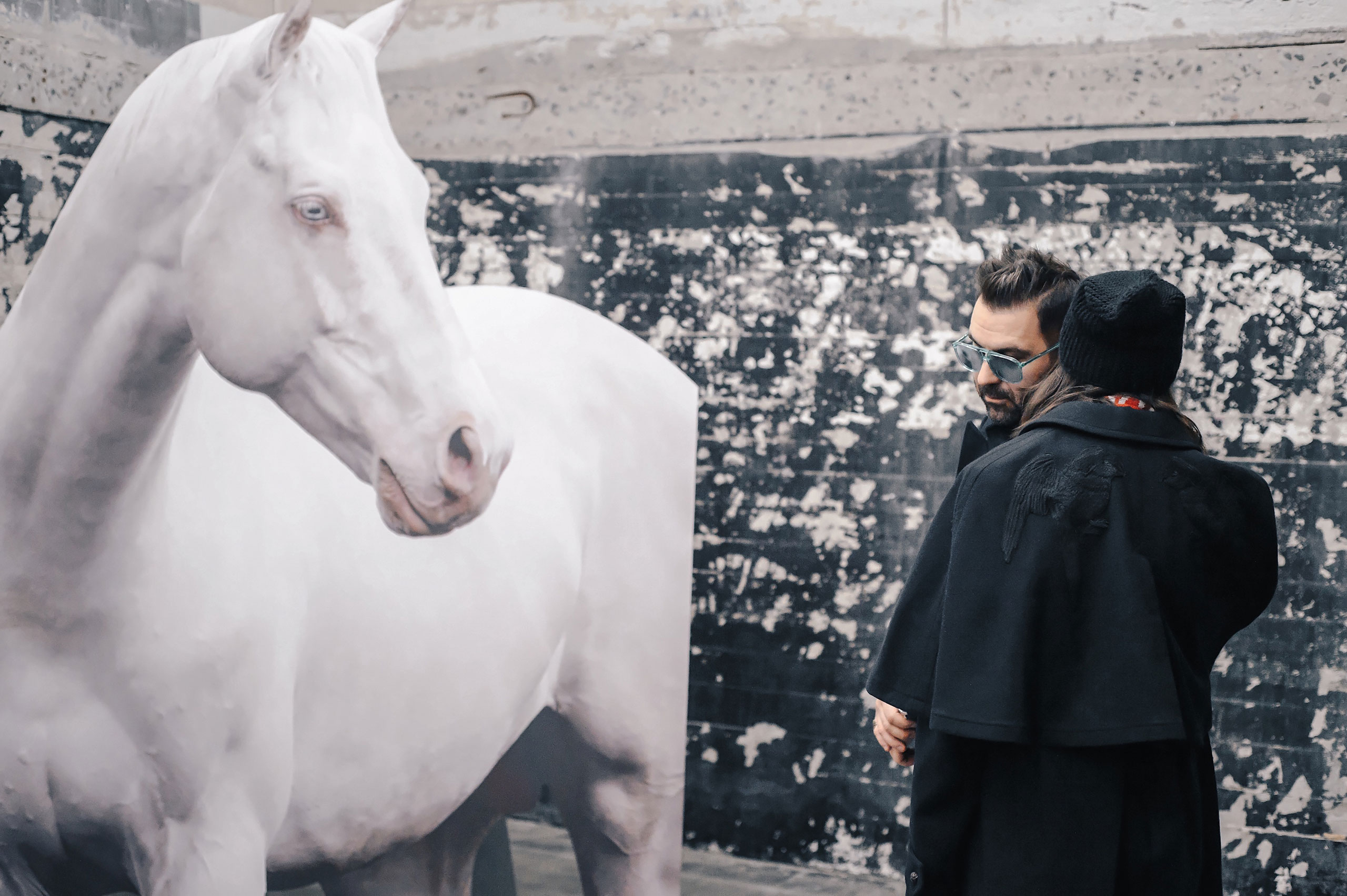
Katja Novitskova, Pattern of Activation (2014) | Boros Collection, Berlin. Photo by NOSHE.
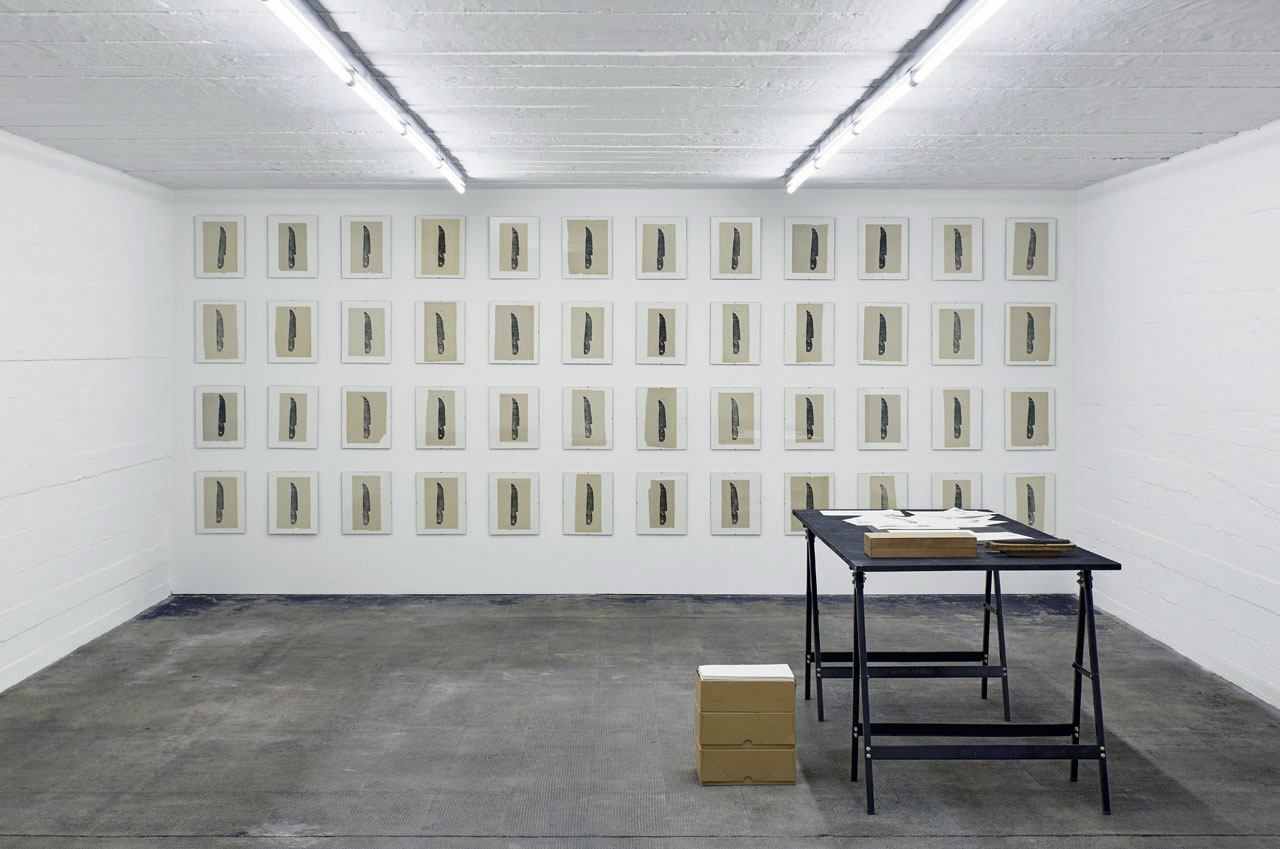
Paulo Nazareth, Arma Branca (2013) | Woodcut on journal paper and wood | Dimensions variable / Boros Collection, Berlin.
Photo by Elias Joidos.
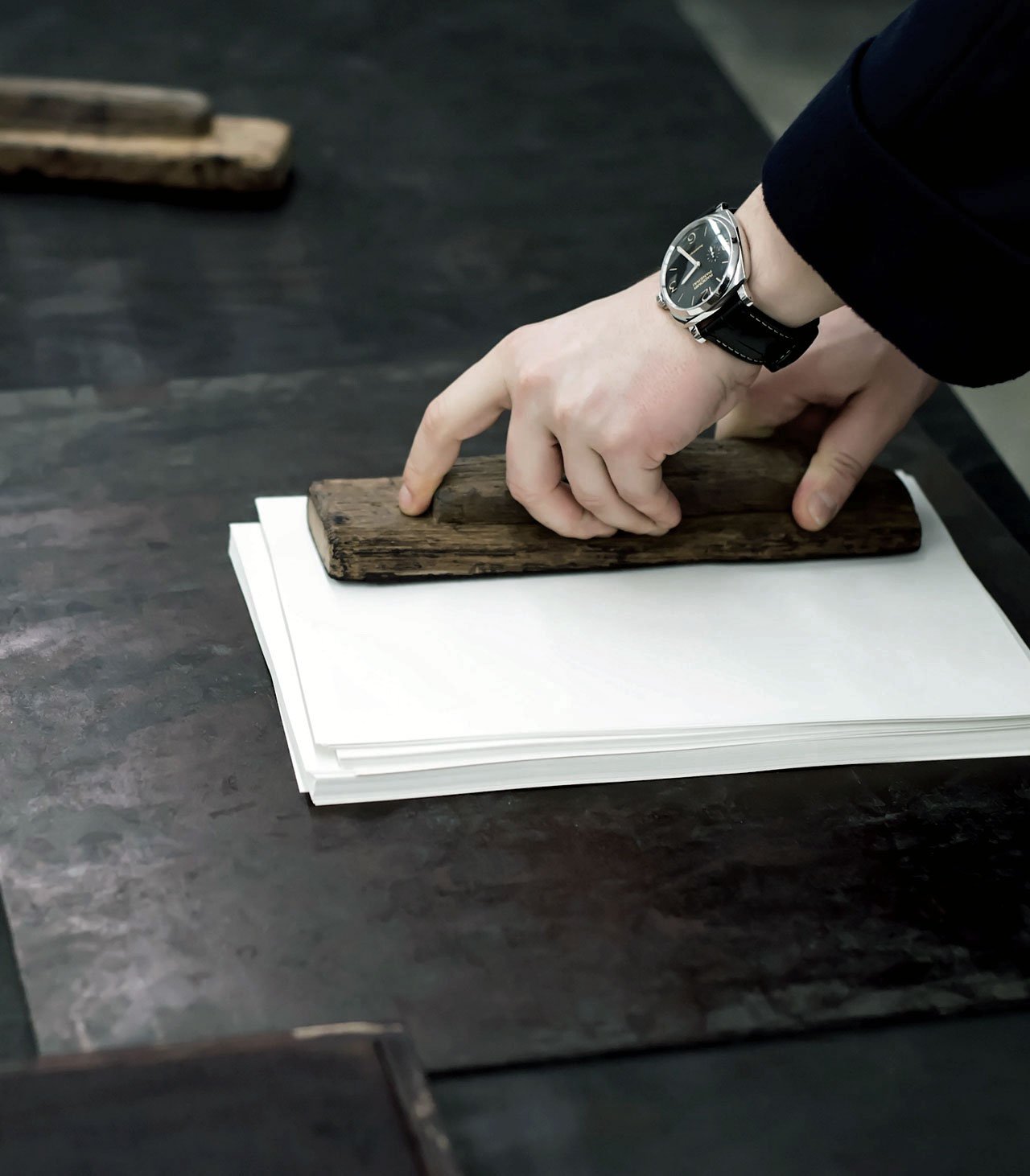
Paulo Nazareth, Arma Branca (2013) | Woodcut on journal paper and wood | Dimensions variable / Boros Collection, Berlin. Photo by Elias Joidos.
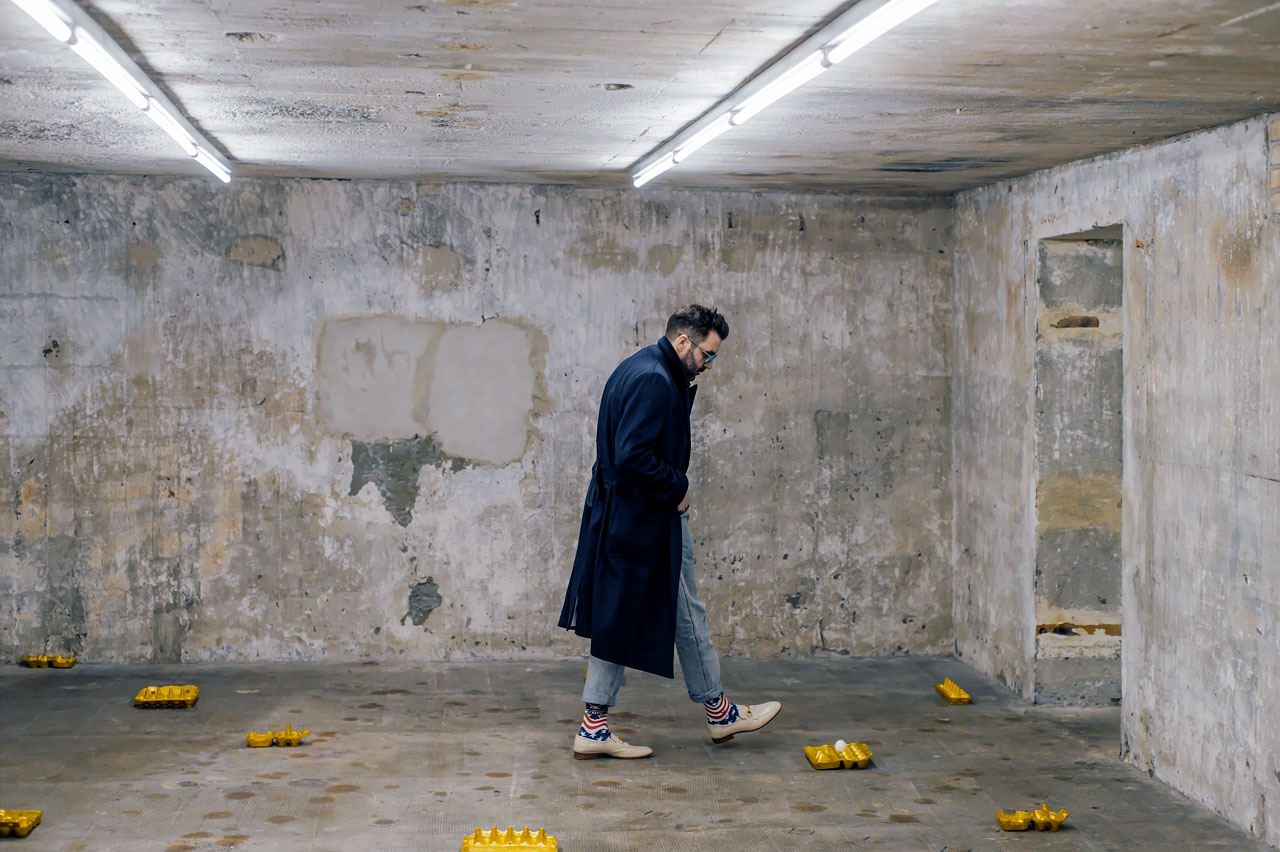
He Xiangyu, Untitled (2017), Bronze, 18K Gold, 24 pieces, overall dimensions variable / Boros Collection, Berlin. Photo by Elias Joidos.
One of the first artworks to come across, “Ohne Titel” (2006), a subliminal coloured drawing by German, Los Angeles-based visual artist Friedrich Kunath, is a fitting introduction to what is to follow. Looming melancholically behind a vibrant haze of coloured noise, an ironic message of sad optimism informs the viewer that “MY LONELINESS SHINES”. Tiptoeing between a fuzzy dreamscape and a harsh reality, the oxymoronic piece encapsulates the otherworldly sensation of experiencing the BOROS Collection in the confines of a labyrinthic concrete bunker.
Take for example Estonian artist Katja Novitskova’s “Pattern of Activation” (2014), a conceptual installation where an oversized albino stallion, in the form of a cut-out printout, stoically stares at a snake-like, gravity-defying, red arrow bouncing off a trampoline representing the techno-ecological expansion of human kind at the expense of other species and biodiversity. Showcased against the room's blackened walls, which at some point in the early 90's must have housed the Bunker's techno-fuelled fetish parties, its message becomes even more succinct. Similarly juxtaposed with its forlorn surroundings, Chinese conceptual artist He Xiangyu’s installation of several egg-cartons made out of 18K gold that are randomly strewn across the gallery floor, poignantly alludes to the increasing materialism and obsolescence of our society.
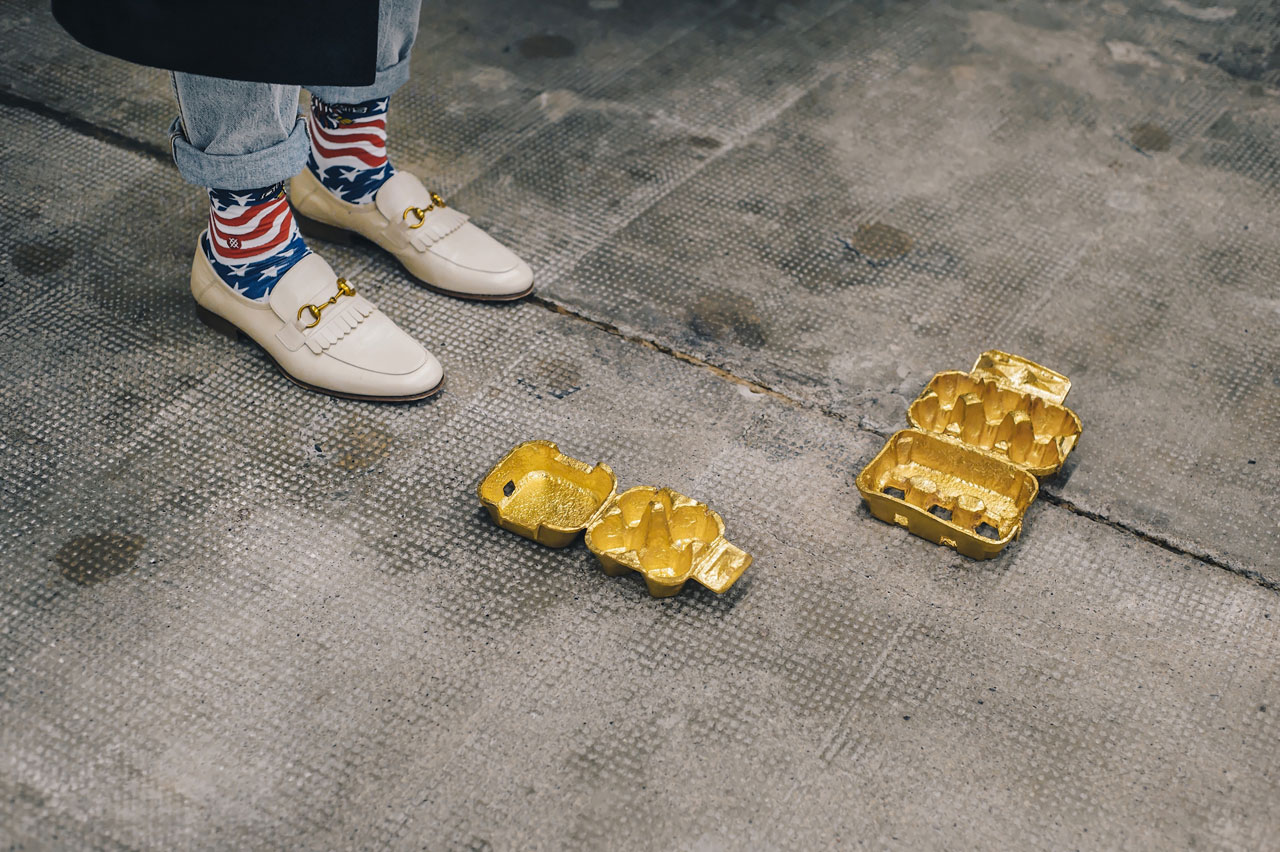
He Xiangyu, Untitled (2017), Bronze, 18K Gold, 24 pieces, overall dimensions variable / 12 Teile, Gesamtmaße variabel / Boros Collection, Berlin. Photo by Elias Joidos.
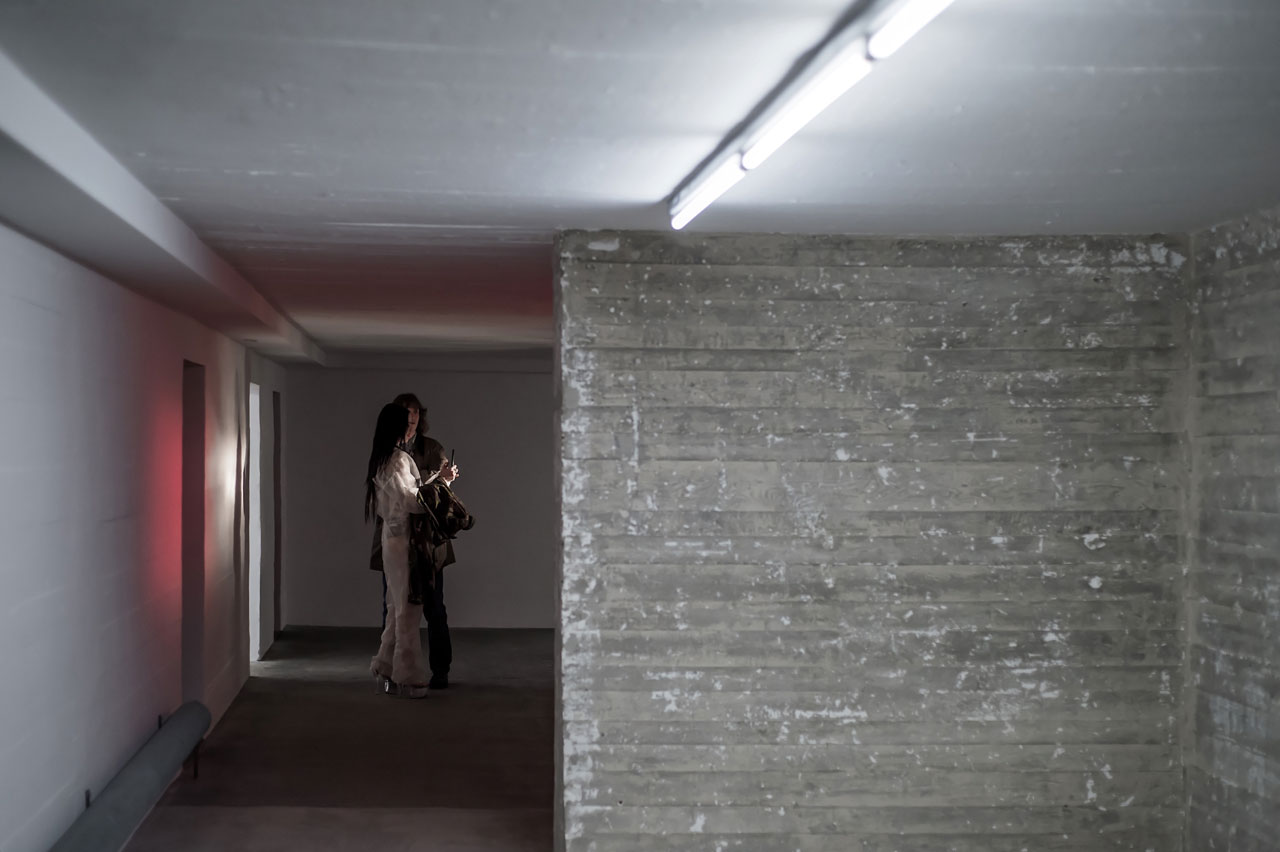
Photo by Elias Joidos.
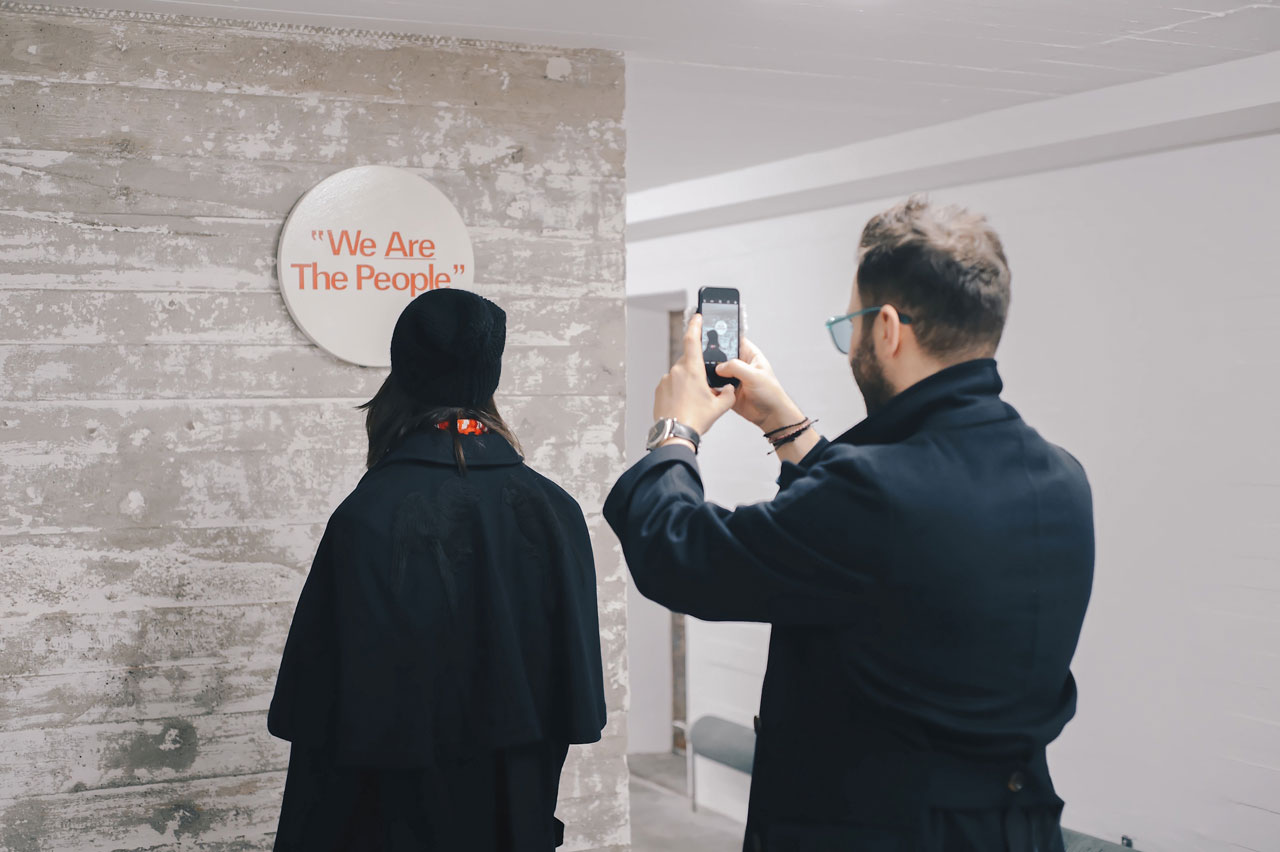
Alberto Zacchini and Costas Voyatzis in front of Johannes Wohnseifer's Small Campaign Button (2005) | Acrylic on aluminium / ø 40 cm | Boros Collection, Berlin | Photo by Elias Joidos.
An art exhibition housed in such an juggernaut of a venue could not of course exclude artwork of equally powerful presense like, for instance, American sculpture Justin Matherly’s “A concern altering pure feature (e.t.s.p.n.g.l.)” (2013), an enormous eagle bust made of concrete and ambulatory equipment that appears to be a surreal replica of some Babylonian edifice, Norwegian and German artist Yngve Holen's surreal sculptural apparatuses that combine a sleek technological aesthetic with a bodily functionality, and British artist Martin Boyce’s Alexander Calder-like, sculptural installation of suspended chair fragments, “We Pass But Never Touch” (2003), which occupies a vertical space of dizzying proportions.
Besides the sculptural pieces and site-specific installations, there is a strong presence of painterly works such as American artist Avery Singer’s large scale acrylic grisailles that mimic digital renderings, Swiss artist Fabian Marti’s post-minimal “Deep Egg” series, and a selection of paintings by the late Luxembourg-born artist Michel Majerus whose appropriation of pop cultural iconography encompassed a cryptic textual narrative.
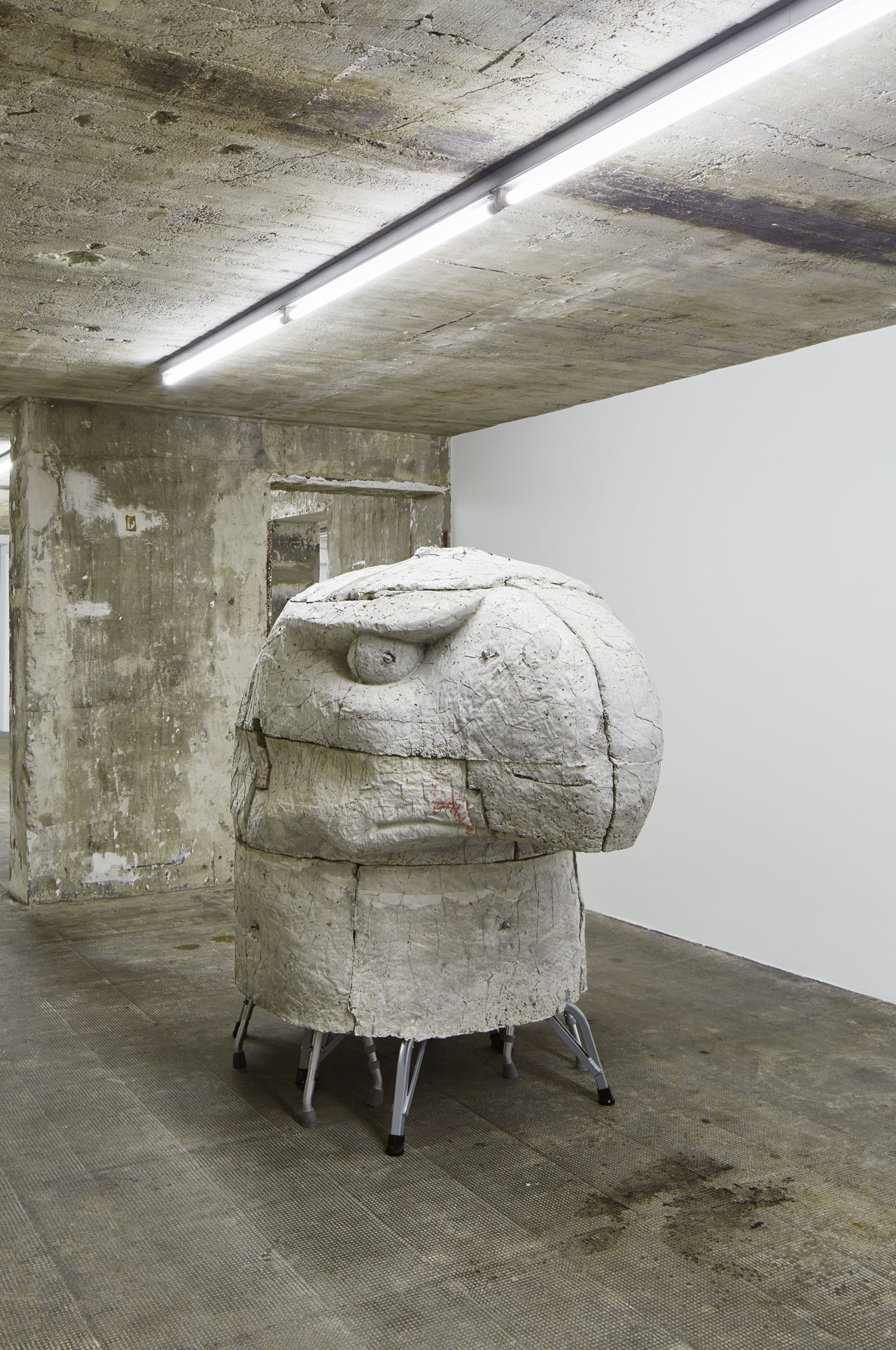
Justin Matherly, A concern altering pure feature (e.t.s.p.n.g.l.) (2013) | Reinforced concrete, ambulatory equipment, stainless steel hardware, zip ties, spray paint, water based marker / 149 × 87 × 164,5 cm / Boros Collection, Berlin. Photo by NOSHE.
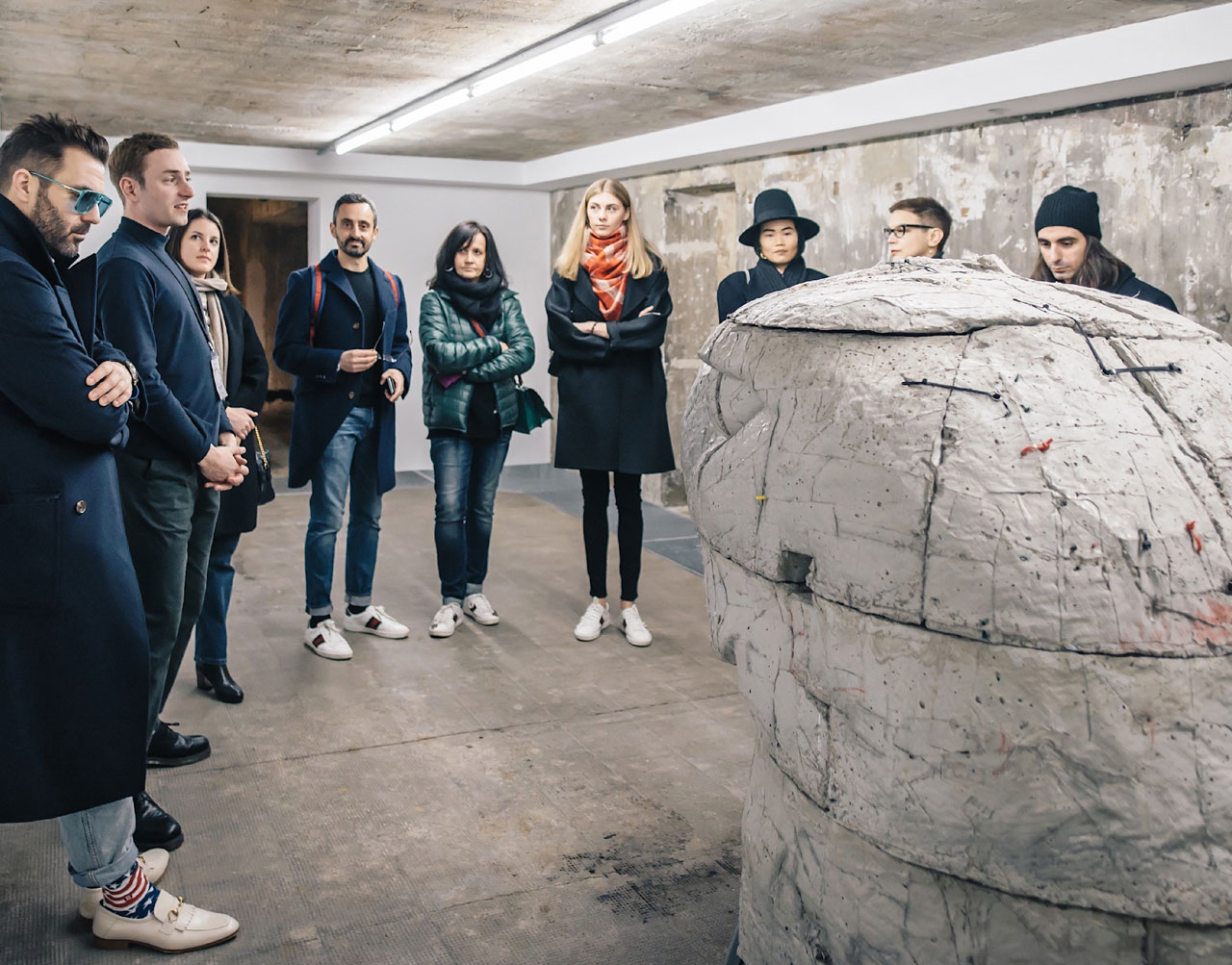
Justin Matherly, A concern altering pure feature (e.t.s.p.n.g.l.) (2013) | Reinforced concrete, ambulatory equipment, stainless steel hardware, zip ties, spray paint, water based marker / 149 × 87 × 164,5 cm / Boros Collection, Berlin. Photo by Elias Joidos.
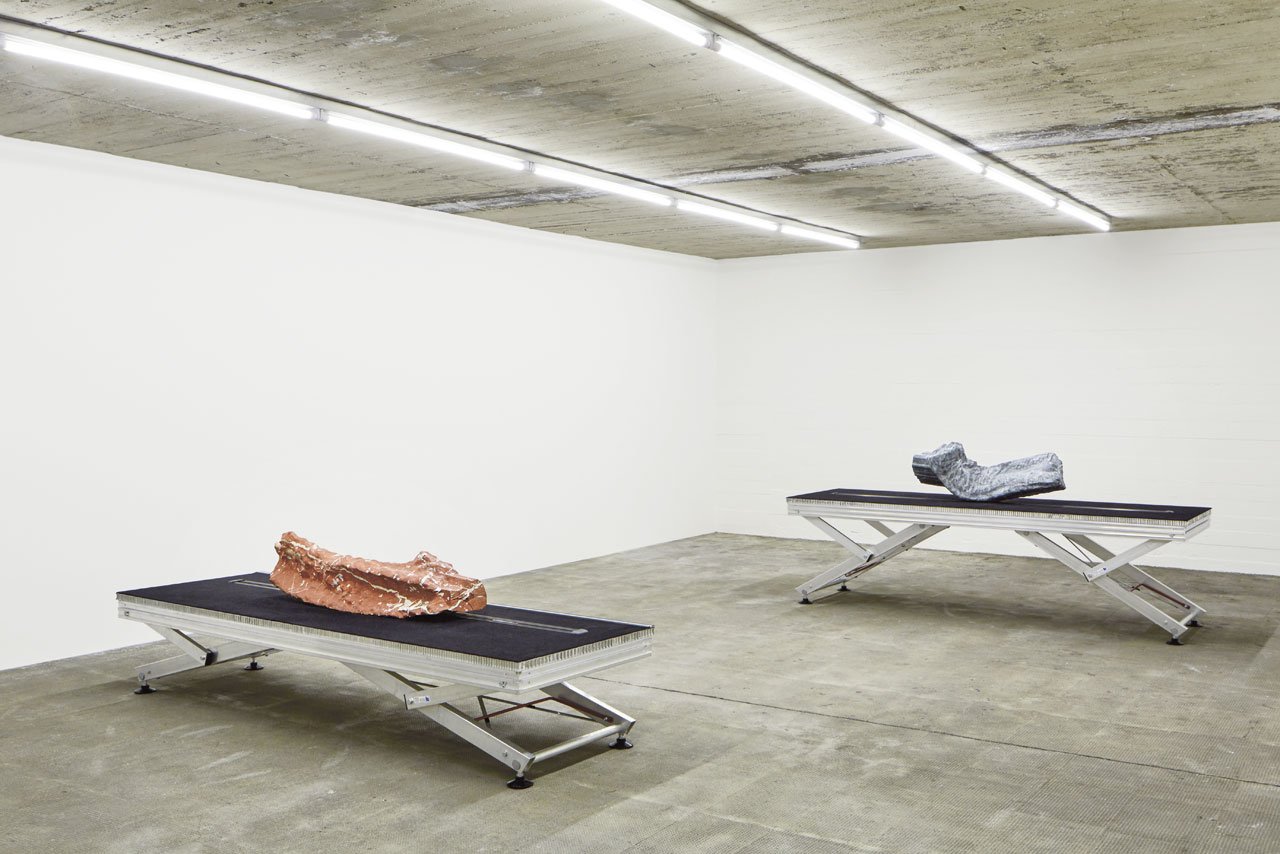
Yngve Holen, Extended Operations XWB, 2014. Boros Collection, Berlin. Photo by NOSHE.
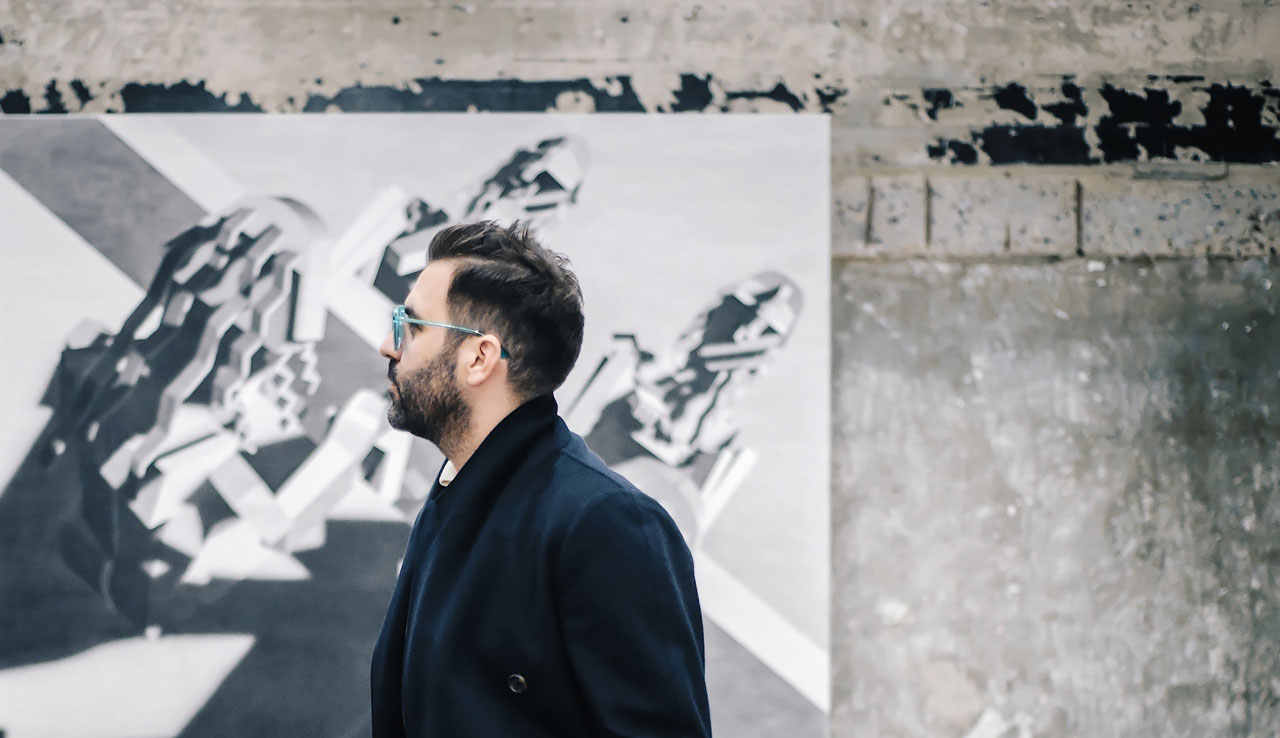
Costas Voyatzis in front of Avery K Singer's Topos (2014) | Acrylic on canvas / 195 × 221 × 4,5 cm / Boros Collection, Berlin. Photo by Elias Joidos.
Visitors also have the opportunity to engage with a number of interactive works, the most notable of which are German artist Johannes Wohnseifer’s installation “BLACK TAPE” (2017), where visitors are free to adorn—or deface, the distinction is subjective—the walls with black tape, and Brazilian artist Paulo Nazareth’s “Arma Branca” (2013) where, besides admiring the framed woodcuts of kitchen knives that fill one of the room’s walls, visitors can make their own prints to take home with them.
Nazareth’s work is often autobiographical, drawing from his African and indigenous heritage to investigate social constructions of race and identity. Such is the nature of his ongoing project called “Cadernos de África” (“African Notebooks“), a walking expedition throughout the American and African continents whose experience is recounted in notebooks, photographs, videos, and objects collected along the way, and whose heavy toll is hinted at by the artist's distressed, soiled Muslim robe that hangs solitarily in another gallery space.
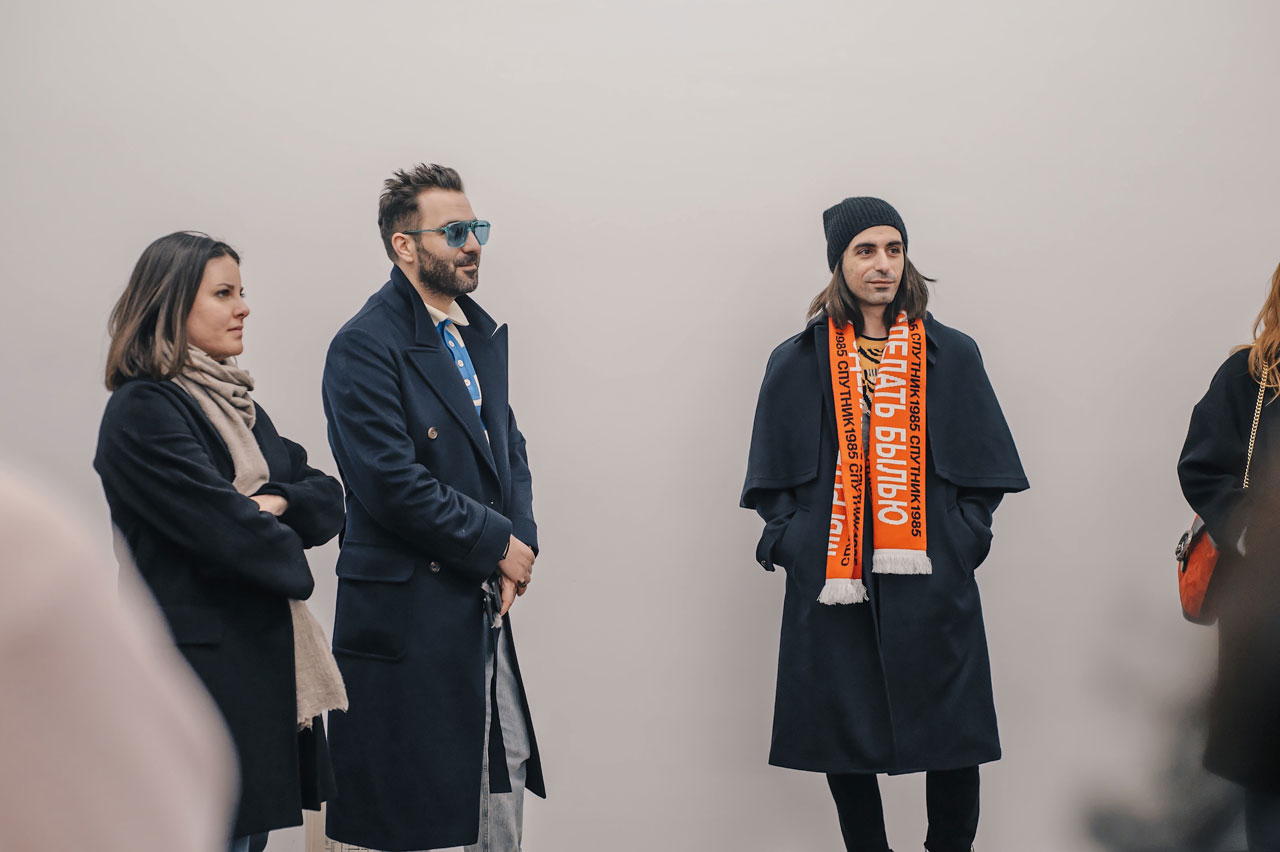
Photo by Elias Joidos.
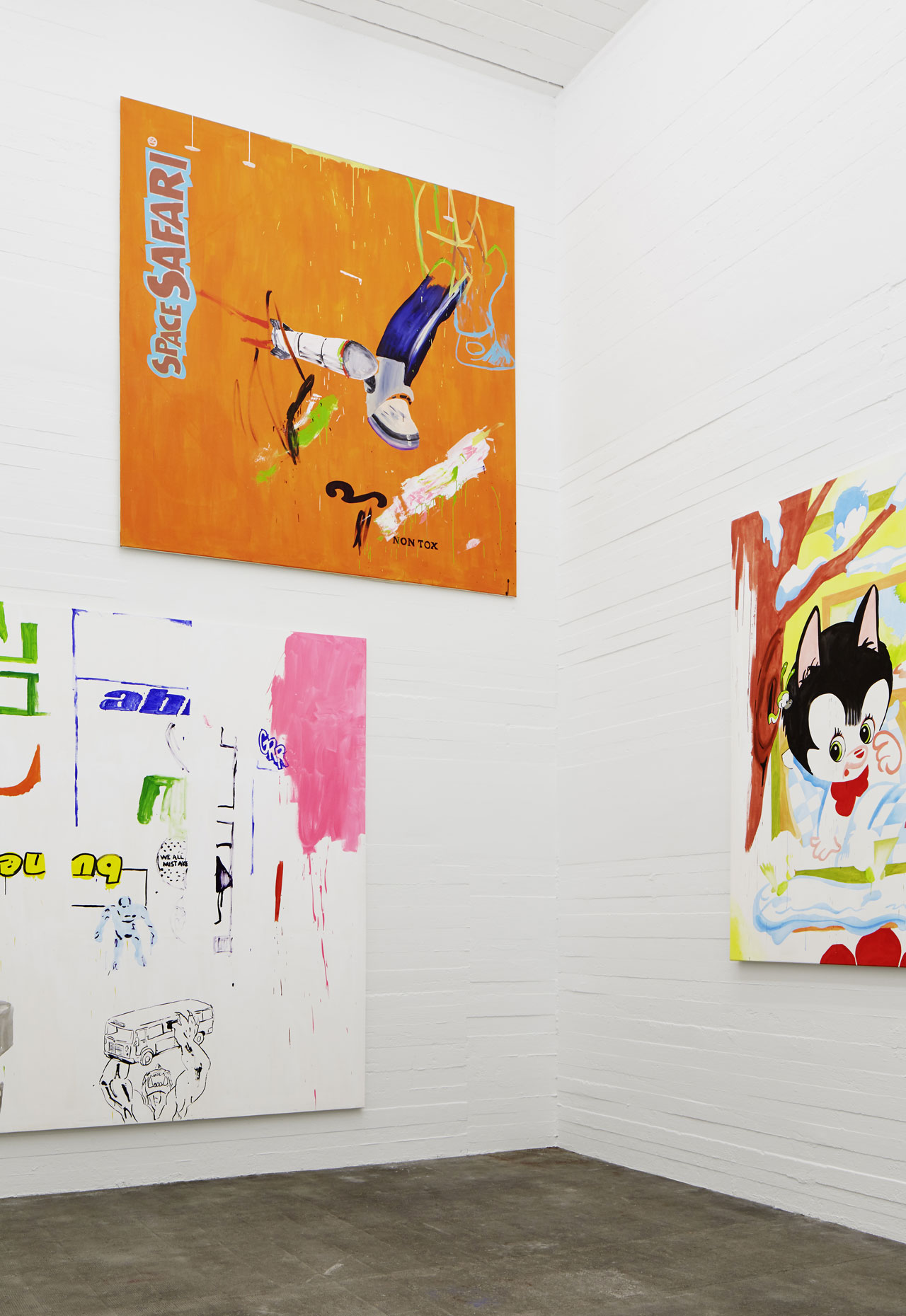
Michel Majerus, Fuck off (2000) / Acrylic on cotton / 303 × 333 cm / Boros Collection, Berlin. Photo by NOSHE.
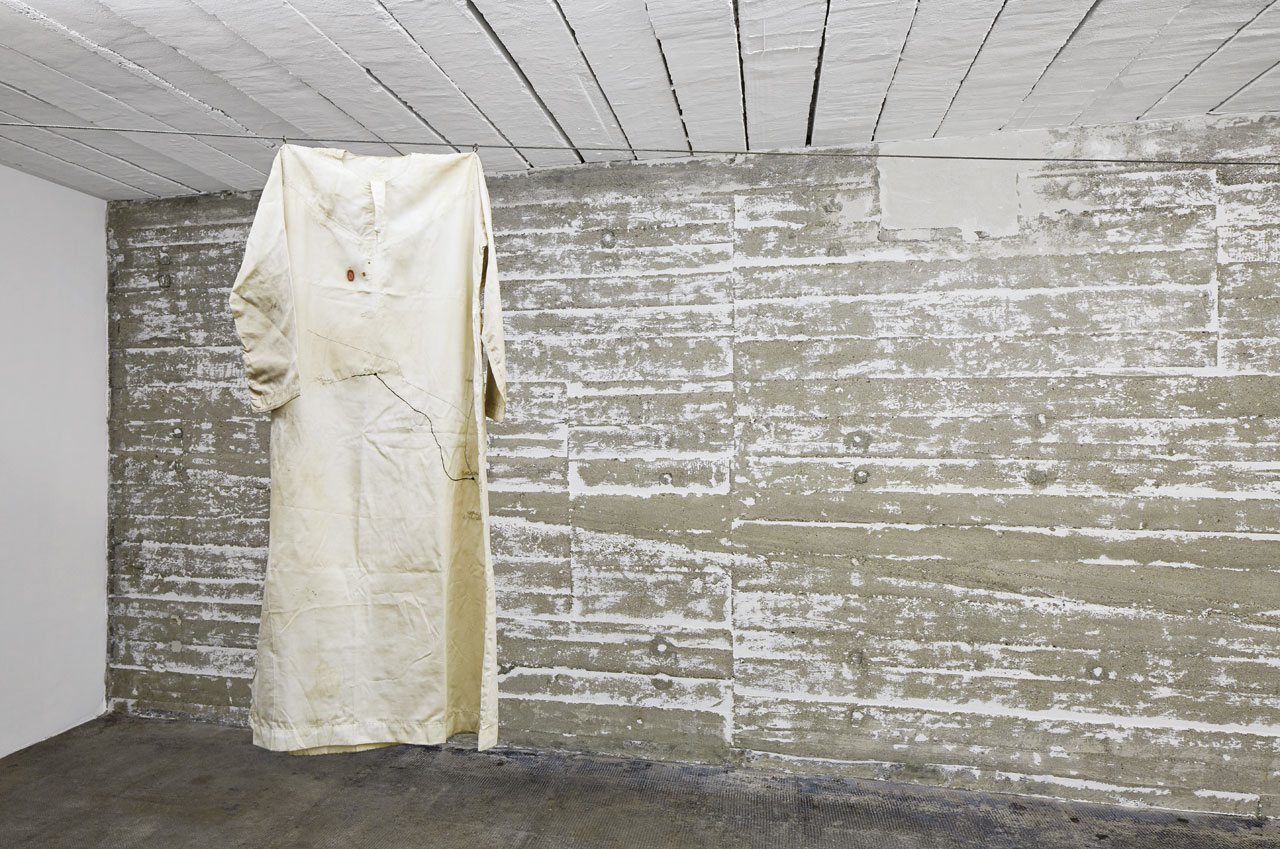
Paulo Nazareth, Untitled (from Cadernos de África project) (2014) | Hand embroidery on muslim robe / 136 × 110 cm / Boros Collection, Berlin. Photo by NOSHE.
Undoubtedly, the sight of a lonely robe suspended inside a stripped down, crypt-like, concrete topography is bizarre to say the least. Yet after a while inside the bunker, bereft of all external stimulation, it's no longer imperative for art to be explained but rather to be experienced. After all, what attracts Christian Boros to the artwork he collects is the fact he doesn’t understand it as he has said in the past. And indeed, there is something morose in self-evident or self-explanatory work that is refreshingly absent from the Boros Collection whose multi-faceted, enigmatic disposition is all the more amplified by its mystical, maze-like setting.
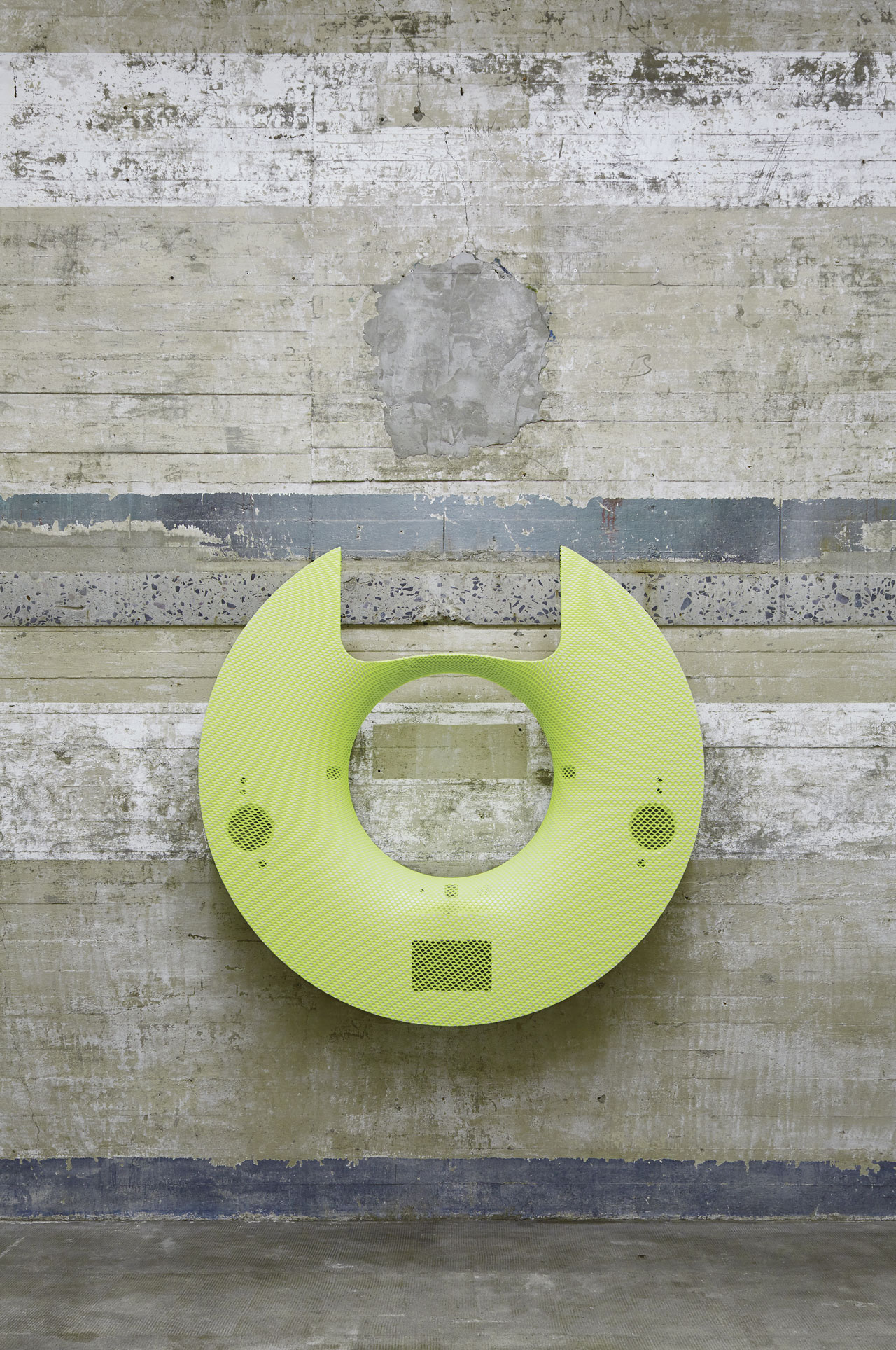
Yngve Holen's Vujà dé (2015) | Plastic, mesh, steel / Plastik, Netzgewebe, Stahl | 177 × 185 × 36,5 cm | Boros Collection, Berlin, Photo by NOSHE.

Johannes Wohnseifer, black tape (2017) | Acrylic letters, black tape /Intervention from exhibition visitors / Dimensions variable / Boros Collection, Berlin. Photo by NOSHE.















